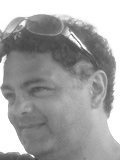|
|
Presentation: "The importance of descriptions in understanding the impact of change"
Time:
Tuesday 12:05 - 13:05
Location:
Salon D
Abstract:
Our ability to reason about things is entirely based on our understanding of what is described. It might be a UML diagram, an ER diagram, a class diagram, a BPMN diagram or simply a diagrammatic representation of a system, the architecture, rendered in Viso. The problem we have with all of these is rooted in their formal semantics and their formal relationships that connect them. More formally we really want to understand how a requirement is described and how it is met or not met. We want to understand what the possible cost of meeting a requirement will be. Today this is largely in the domain of magic, hubris and if we are lucky good judgement. But is that really enough to drive change in an enterprise.
In this session we shall examine what is enough and what enough might mean in practical terms and in terms of the benefits it might yield. In so doing we shall present a new software lifecycle and the tools that support it called the Zero Deviation Lifecyle. The aim of the ZDLC is to reduce cost, improve quality and be able to answer fundamental questions about linkage, alignment and cost.
|
Steve Ross-Talbot, Head of R&D at Cognizant and the co-chair of Web Services Choreography

Professor Steve Ross-Talbot has been involved in computational science
since 1975. He has published various papers over the years in topics
ranging from query optimization to user interface design to grid to
distributed systems and formal methods. Ross-Talbot currently works for
Cognizant Technology Solutions as the CEO of a Cognizant Capital funded
venture called Qualit-e. He has a small team which focuses on the future
of software development and outsourcing alongside a larger team of
enterprise architects who deliver to customers. Ross-Talbot was a key
member of the Open Grid Forum in 2005/2006 focusing on distributed
workflow for business processes hosted in a grid – nowadays it is known
as BPaaS. Recently (last year) he was invited to be one of the authors
of the SOA Manifesto along with luminaries such as Thomas Erl and Grady
Booch.
His current interests are centered on using formal methods to build
robust distributed systems (which typify cloud based solutions and SOA)
and how we innovate collaboratively with our customers. This is why
WS-CDL, SAVARA, BPMN2 on the one hand and HoQ and TRIZ on the other are
all close to his heart and form the basis for all that he does in both
Cognizant and Pi4 Technologies. His aim is simply to contribute to move
things forward and deliver software solutions faster with higher quality
and reduced costs and so remove us of the linearity in global delivery
of software.
|
 |
| |


